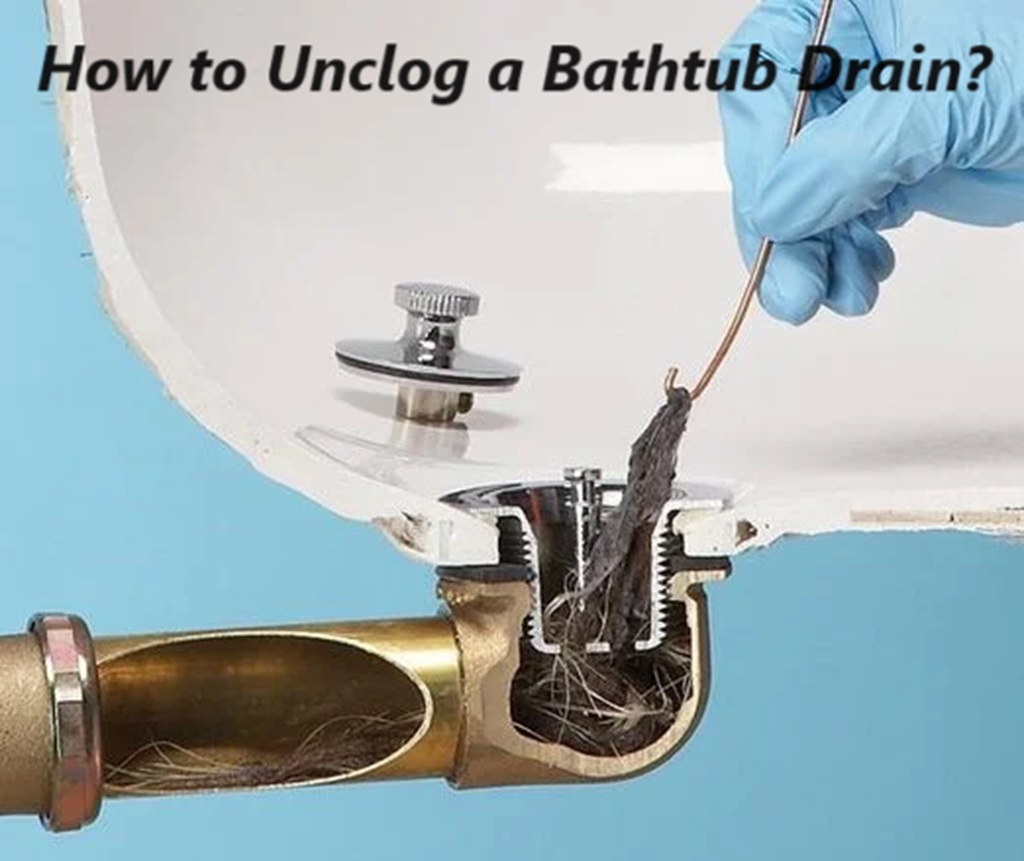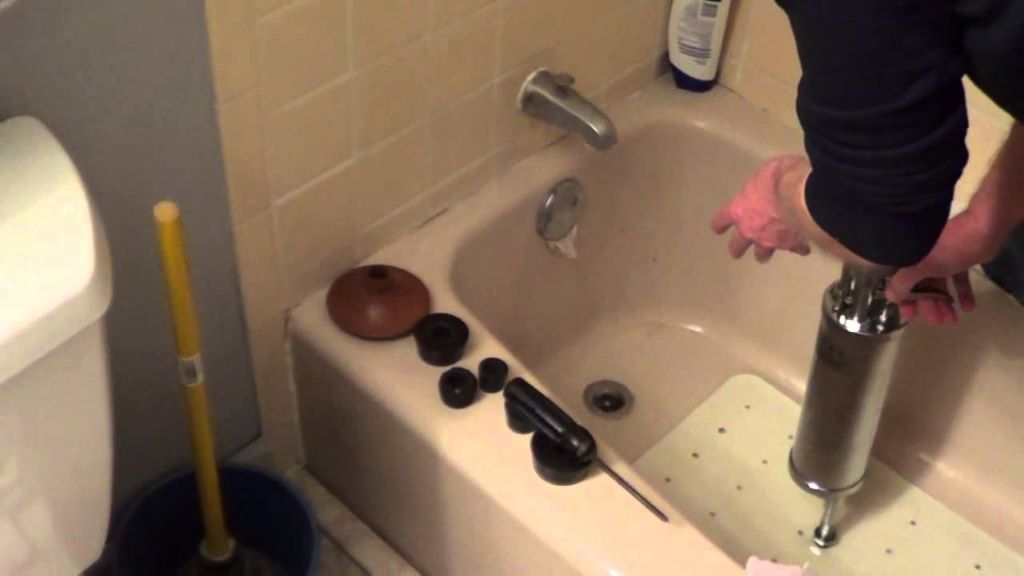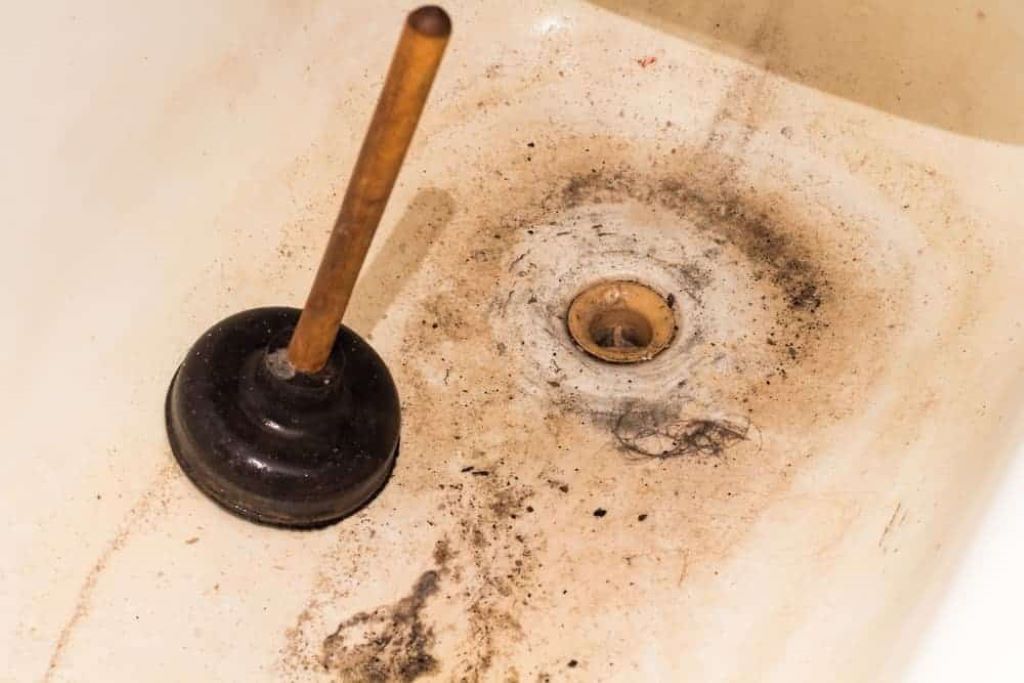
21 Jan How to Unclog a Bathtub Drain?
A clogged bathtub drain is one of your home’s most annoying plumbing issues. It can be incredibly frustrating when you want to take a relaxing bath after a long day only to find the tub half-full of standing water from the previous shower. But don’t reach for the phone to call a plumber just yet – unclogging a tub drain is an easy DIY project, even if standing water covers the clog.
With some simple tools like a plunger, drain snake, baking soda, vinegar, and boiling water, you can break up the built-up hair, soap scum, and other gunk that is likely causing the clogged drain. Depending on the severe clog, it may take some time and elbow grease, but you can remove the drain clog yourself without paying a plumber.
Here is a step-by-step guide on the various methods you can use to unclog a bathtub drain with standing water successfully:
Gather Your Tools

Before you begin, assemble the tools and ingredients you’ll need:
- Plunger – This essential tool creates suction and pressure to dislodge clogs. Look for a plunger with a flanged bottom to get a tight seal over the drain opening.
- Drain snake/auger – This flexible tool can reach deep into drain pipes to grab and pull out debris. Get a size that matches your drain pipe diameter.
- Baking soda – This pantry staple reacts with vinegar to break up clogs via a fizzy chemical reaction.
- White vinegar – The acid in vinegar also helps dissolve blockages. Never use vinegar with bleach!
- Boiling water – Hot water helps liquefy and flush away clogs.
- Gloves – Protect your hands from hot water and chemicals. Dish-washing gloves work well.
- Bucket – Useful for capturing drained water.
- Towels – Help soak up standing water in the tub.
Plunging
The simplest clog removal method is a good plunge with a plunger. Here’s how to do it:
- Remove the tub drain stopper if possible. This allows direct access to the drain.
- Place the plunger directly over the drain opening. Get as tight of a seal as you can over the drain.
- Fill the tub with enough water to cover the plunger suction cup about 1-2 inches. This allows pressure to build up.
- Plunge up and down vigorously 10-15 times. Put some muscle into it! The pressure and suction can dislodge blockages.
- When plunging, try to vary the force. Do some quick, lighter plunges followed by a few forceful ones. Changing up the force can help break up different clogs.
- Check to see if the water starts draining. If not, repeat more plunging.
The key to effectively plunging a drain is creating robust suction and pressure. Discover how to remove the bathtub drain with forceful plunges, and you can dislodge stubborn clogs. Don’t be shy about getting aggressive!
Baking Soda and Vinegar
For more tenacious clogs, try this classic chemical reaction drain cleaner:
- Remove any standing water from the tub. A wet/dry shop vacuum is handy for this task.
- Pour 1/2 cup baking soda directly into the drain opening. Get as much down the opening as possible.
- Follow with 1/2 cup white vinegar. It will immediately start fizzing when it contacts the baking soda!
- Place the tub stopper or plunger over the drain opening to seal it, and let the fizzing chemical reaction work for 5-10 minutes.
- Flush the drain with hot (not boiling) water from the faucet for a full minute. This helps push the loosened clog debris down the drain.
The acidic vinegar reacts with the alkaline baking soda to create a fizzy foam that expands into clogs, helping break them up. Using this method a few times can clear tough blockages. Just give the chemicals time to work before flushing them with hot water.
Drain Snake
For clogs further down the drain pipe, a mechanical drain snake is required. Follow these steps:
- Start by using the plunger and baking soda/vinegar methods first. Remove any easy clogs.
- Remove the tub drain plate/cover to expose the drain opening fully. This gives the snake easier access.
- Slowly feed the drain snake down the drain opening. Please don’t force it.
- Twist the handle clockwise as you push the snake gently down. This allows the snake to grab debris.
- When you encounter resistance, that’s the clog! Twist the snake to grab the clog and break it up.
- Once the snake moves past the clog, pull it back up while twisting. This brings the clog debris with it.
- Remove debris from the snake before sending it back down for another pass. Repeat as needed.
- Flush the drain with hot water after the snake comes up clear. Reattach the drain plate.
Snaking the drain is very effective at clearing out stubborn clogs deep in the drain pipe. Be patient and make multiple passes until the snake pulls up no more debris.
Boiling Water
For easier clogs, a kettle of boiling water may be all you need:
- Bring several quarts of water to a rapid boil. Make sure it’s actually bubbling, not just hot.
- Remove any standing water from the tub so you have direct access to the drain.
- Carefully pour the boiling water directly into the drain opening. Avoid splashing yourself.
- Let the hot water sit in the drain for several minutes to melt and wash away debris.
- Flush with more boiling water and plenty of cold water from the tub faucet.
Boiling water can melt soap scum, hair, oils, and other gunk clogging your drain. It’s a simple solution before breaking out the plunger or snake. Exercise extreme caution when handling the boiling water.

Prevent Re-Clogging
Once you get your tub drain unclogged, take steps to prevent future clogs:
- Use a drain catcher over the drain to stop loose hair from going down. Clean it often.
- Avoid letting soap, shampoo, and conditioner residue build up in the tub. Rinse thoroughly after bathing.
- Once a week, flush the drain with boiling water followed by cold water to wash away accumulations.
- Every few months, pour a 1⁄2 cup of baking soda down the drain, sit for 15 minutes, then flush with vinegar and hot water.
- Consider a monthly maintenance treatment with a commercial drain cleaner made from enzymes and bacteria.
With consistent maintenance, like removing built-up hair and cleaning with baking soda/vinegar, you can prevent tub drain clogs from ever developing.
FAQs
What causes bathtub drain clogs?
Hair and soap scum are the most common culprits. Strands of hair and soap residue accumulate over time and congeal into a dense mass that blocks water flow.
What is the fastest way to unclog a bathtub drain?
Trying boiling water first can clear a minor clog quickly. A drain snake will remove clogs the fastest by pulling out debris mechanically for more demanding jobs.
How can I unclog my bathtub without chemicals?
You can use a plunger or drain snake with hot water to clear clogs mechanically and avoid chemicals. Baking soda is a natural drain cleaner option as well.
Why does my bathtub drain slowly but not get fully clogged?
Partial obstructions from hair and soap scum can restrict water flow but not block it entirely. Using a snake or boiling water flushes away the debris.
Should I call a plumber for a clogged bathtub drain?
You can usually successfully unclog a bathtub drain with essential tools and methods. Calling a plumber is only needed for severe clogs you can’t clear or access.
Conclusion
A stopped-up, slow-draining bathtub is one of the most vexing household plumbing issues. Standing water left from a shower is gross and prevents you from using your tub correctly. You can conquer that tub drain clog with basic DIY methods like plunging, snaking, boiling water, and baking soda/vinegar.
With some patience and serious elbow grease, mastering how to turn off hot water to your bathtub becomes a crucial step. Follow this, and with caution handling boiling water or harsh chemicals, you’ll soon have the tub draining freely again, ready for a relaxing bath. Approach the clog from multiple angles, and you will find the solution to get your bathtub draining correctly once again!



Sorry, the comment form is closed at this time.